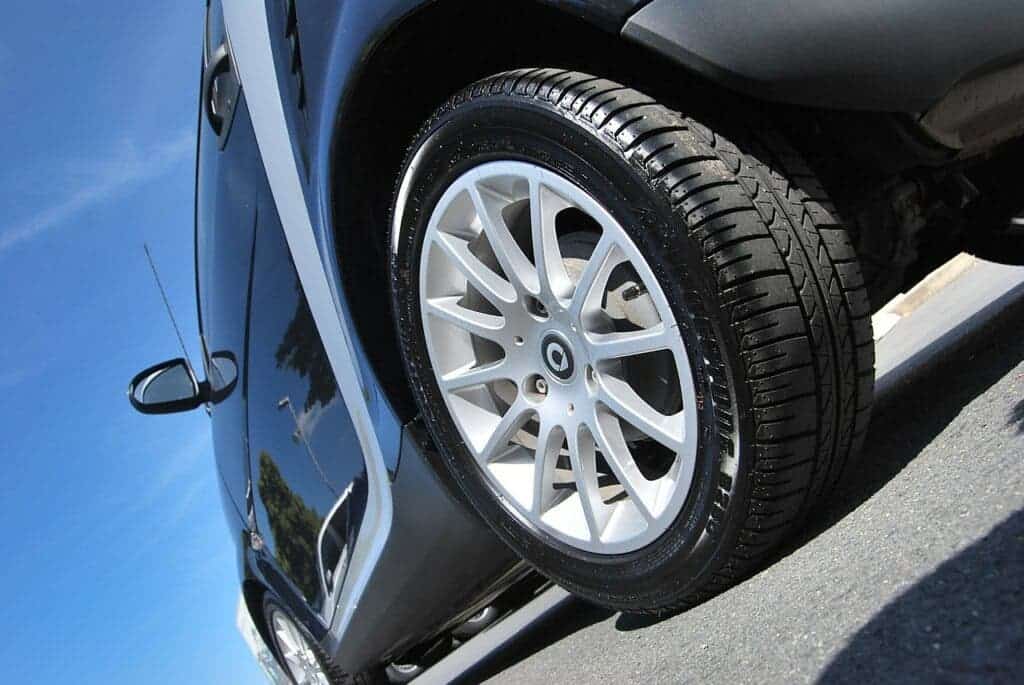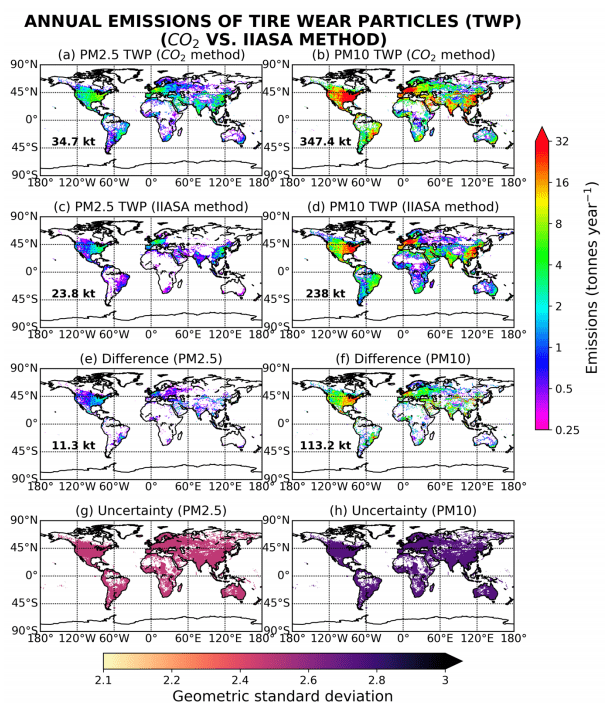
Each day, millions of vehicles release microscopic particles of polymers generated by the friction between tires and the road. Some of these particles are so small and light, they’re easily carried by atmospheric winds across the globe. According to a new study, as much as 52,000 tonnes of road-traffic-sourced microplastics carried by winds settle in the ocean every year, with dire consequences for marine life.
“The reason why we wanted to do research to answer this scientific problem was that, although transport of microplastics (MPs) via runoff and wash-out processes to the marine and/or freshwater ecosystem has been studied extensively, very little is known about how these particles are dispersed in the atmosphere and where they are deposited. This is important due to their health impact in animals and humans, but also due to their affinity to absorb organic compounds and heavy metals increasing their toxicity,” Nikolaos Evangeliou of the Norwegian Institute for Air Research (NILU), lead author of the new study, told ZME Science.
Much talk about the environmental impact of tires is focused on their manufacturing. Typically, tires are derived from ethylene and propylene, for which production generates significant greenhouse gas emissions. At the end of their lifecycle, tires often end up in landfills polluting the environment.
However, tires also produce important pollutants during their operation. Due to their constant wear and tear, tiny particles of rubber, fibers, and other organic and inorganic materials are generated and transported via atmospheric currents far away from their source.
Such particles have been previously detected in highly remote areas of the globe — even as far away as the Arctic, where their deposition can decrease the surface albedo effect and accelerate the melting of ice.

In their new study, Evangeliou and colleagues wanted to quantify just how much of these microplastics circulate through the world’s atmosphere on a yearly basis.
“The biggest surprise when conducting this study, which is actually the biggest challenge for the future, is that lack of atmospheric measurements of MPs. Although there are some, they only present number concentrations and only for particles larger than 20 micrometers, which are less labile and less vulnerable to long-range transport, and hence, they cannot travel to long distances from the main source regions. For the record, here we study particles with a size smaller than 10 micrometers. However, many groups are currently working to solve the problem of proper sampling and analysis of MPs and many methodologies are being tested,” Evangeliou told ZME Science.
The particles targeted in the new study are known as non-exhaust traffic-related particles (NETP). They are released due to mechanical abrasion and corrosion, as well as the resuspension of already deposited particles due to turbulence from traffic (Evangeliou calls this “the grasshopper effect”).
NETPs are not only generated by the wear on tires, but also by wear on the clutch and engine, abrasion of bearings, and corrosion of various vehicle components.
“For the tire wear particles (TWPs), the wearing process depends on the type of tire (i.e. size, tread depth, chemical composition, accumulated mileage, set-up), road surface (i.e. material, porosity, condition, maintenance) and vehicle characteristics (i.e. weight, location of driving wheels, engine power), as well as on vehicle’s state of operation (i.e. speed, acceleration, frequency and extent of braking and cornering),” Evangeliou explained.
“Brake wear particle (BWP) emissions depend on the bulk friction material, on the frequency and severity of braking (driving conditions), while speed, condition and maintenance of the automobile can also be important. Another key factor that affects BWP emissions severely
deals with the environmental conditions during the braking (temperature and environmental compounds present in the road).”
Together, TWPs and BWPs constitute around 1.8% of the total plastic production, according to a 2017 study.
That might not seem like a lot, however, tire wear microplastic emissions alone account for roughly 30% of all microplastic pollution in freshwater and oceanic ecosystems. Most of it is sourced in the eastern US, Northern Europe, and the heavily urbanized areas of Southeast Asia.
As much as 52,000 tonnes of these microscopic particles smaller than 2.5 microns end up in waterways and the world’s oceans every year, according to the new study published in Nature Communications. An additional 20,000 tonnes of microplastics associated with road and vehicle wear are deposited in remote ice-covered regions of the world, where they drive more melting.
Although PM10 (microplastic particles 10 micrometers in size or smaller) are less susceptible to long-range airborne transport than PM2.5, traffic-related emission generates roughly 10 times more such emissions. PM10 particles tend to stay closer to their source — in most situations, that’s urban environments where they can contribute to adverse health effects, particularly those affecting the lungs like asthma.
The exact impact that traffic-related particle emissions have on the climate is currently unknown, but this is something that may be addressed by research in the future.
In the meantime, this study is a perfect illustration of how very small things can add up to produce a significant impact on the planetary level.


